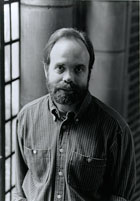
The Expanding Empire of Pop
Sunday, August 2nd at 3 p.m., Miami Art Museum hosted Thomas Crow’s lecture, “The Expanding Empire of Pop: From Andy Warhol to the Beatles to Jeff Koons to Damien Hirst.” The lecture followed that track, ‘[u]sing examples from film and music alongside works of fine art, Crow examine[d] how the self-conscious sensibility of Pop migrated back into entertainment media, altering the environment from which younger artists would take their cues in succeeding decades.” Thomas Crow’s book, Rise of the Sixties, provides an authoritative overview of the major themes and figures of the 1960s art world. His research into Pop Art, in its many facets, is the primary place from which his lecture came. His interest in examining this subject arises from the idea that Pop as moved on and into the museum as an artifact from the 1960s. Obviously, Damien Hirst’s work came far after the 60s so, there seem to be manifestations of some of the central ideas of Pop that continue to engage artists.
“Pop Art is the art of observations,” said Profs. Crow. As he continued throughout the lecture, he continually pointed to “who is the observer and who is being observed” is this going back and forth between visual art, film, and music. He talked about Warhol and how he and those around him took Pop transformations from “real” to personas. Here, think of the many that circulated around Warhol’s Factory


Part of the Crow’s Pop narrative is allegory, woman as enigma. Allegory is devalued now and needs to be recycled (reference to Jeff Koons). Is his references to Warhol because artists aren’t original, they’re mechanical?
Current manifestations of Pop seem to elude to “consuming the spectacle.” BravoTV now seems like the logical conclusion to this path with the artist being the feature of the projected image, the maker of sound and music, the writer, albeit in improvisation, the script by which everything is played out.
Miami Art Museum 101 West Flagler Street Miami, Florida, 33130
